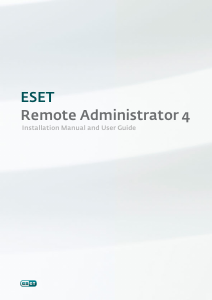
Blender User Manual, Release 2.78
Blender’s History
In 1988, Ton Roosendaal co-founded the Dutch animation studio NeoGeo. NeoGeo quickly became the largest 3D an-
imation studio in the Netherlands and one of the leading animation houses in Europe. NeoGeo created award-winning
productions (European Corporate Video Awards 1993 and 1995) for large corporate clients such as multinational electron-
ics company Philips. Within NeoGeo Ton was responsible for both art direction and internal software development. After
careful deliberation Ton decided that the current in-house 3D toolset for NeoGeo was too old and cumbersome to maintain,
and needed to be rewritten from scratch. In 1995 this rewrite began and was destined to become the 3D software creation
we all know as Blender. As NeoGeo continued to refine and improve Blender it became apparent to Ton that Blender could
be used as a tool for other artists outside of NeoGeo.
In 1998, Ton decided to found a new company called Not a Number (NaN) as a spin-off of NeoGeo to further market and
develop Blender. At the core of NaN was a desire to create and distribute a compact, cross-platform 3D application for free.
At the time, this was a revolutionary concept as most commercial 3D applications cost thousands of dollars. NaN hoped to
bring professional level 3D modeling and animation tools within the reach of the general computing public. NaN’s business
model involved providing commercial products and services around Blender. In 1999 NaN attended its first SIGGRAPH
conference in an effort to more widely promote Blender. Blender’s first SIGGRAPH convention was a huge success and
gathered a tremendous amount of interest from both the press and attendees. Blender was a hit and its huge potential
confirmed!
Following the success of the SIGGRAPH conference in early 2000, NaN secured financing of C4.5M from venture capital-
ists. This large inflow of cash enabled NaN to rapidly expand its operations. Soon NaN boasted as many as fifty employees
working around the world trying to improve and promote Blender. In the summer of 2000, Blender 2.0 was released. This
version of Blender added the integration of a game engine to the 3D application. By the end of 2000, the number of users
registered on the NaN website surpassed 250,000.
Unfortunately, NaN’s ambitions and opportunities did not match the company’s capabilities and the market realities of the
time. This over-extension resulted in restarting NaN with new investor funding and a smaller company in April 2001. Six
months later NaN’s first commercial software product, Blender Publisher was launched. This product was targeted at the
emerging market of interactive web-based 3D media. Due to disappointing sales and the ongoing difficult economic climate,
the new investors decided to shut down all NaN operations. The shutdown also included discontinuing the development
of Blender. Although there were clearly shortcomings in the then current version of Blender, such as a complex internal
software architecture, unfinished features and a non-standard way of providing the GUI, the enthusiastic support from the
user community and customers who had purchased Blender Publisher in the past meant that Ton could not justify leaving
Blender to fade into insignificance. Since restarting a company with a sufficiently large team of developers was not feasible,
Ton Roosendaal founded the non-profit organization Blender Foundation in March 2002.
The Blender Foundation’s primary goal was to find a way to continue developing and promoting Blender as a community-
based open source project. In July 2002, Ton managed to get the NaN investors to agree to a unique Blender Foundation plan
to attempt to release Blender as open source. The “Free Blender” campaign sought to raise C100,000 so that the Foundation
could buy the rights to the Blender source code and intellectual property rights from the NaN investors and subsequently
release Blender to the open source community. With an enthusiastic group of volunteers, among them several ex-NaN
employees, a fundraising campaign was launched to “Free Blender”. To everyone’s surprise and delight the campaign
reached the C100,000 goal in only seven short weeks. On Sunday, October 13, 2002, Blender was released to the world
under the terms of the GNU GPL. Blender development continues to this day driven by a team of dedicated volunteers from
around the world led by Blender’s original creator, Ton Roosendaal.
Version/Revision Milestones
The start!
• 1.00 – January 1994: Blender in development at animation studio NeoGeo.
• 1.23 – January 1998: SGI version published on the web, IrisGL.
• 1.30 – April 1998: Linux and FreeBSD version, port to OpenGL and X11.
• 1.3x – June 1998: NaN founded.
• 1.4x – September 1998: Sun and Linux Alpha version released.
• 1.50 – November 1998: First Manual published.
1.1. Getting Started 4












Praat mee over dit product
Laat hier weten wat jij vindt van de Blender 2.78. Als je een vraag hebt, lees dan eerst zorgvuldig de handleiding door. Een handleiding aanvragen kan via ons contactformulier.
beantwoord | Ik vind dit nuttig (9) Lees meer
Ik vind dit nuttig (5)
beantwoord | Ik vind dit nuttig (4)
beantwoord | Ik vind dit nuttig (3) (Vertaald door Google)
beantwoord | Ik vind dit nuttig (2)
beantwoord | Ik vind dit nuttig (0) (Vertaald door Google)